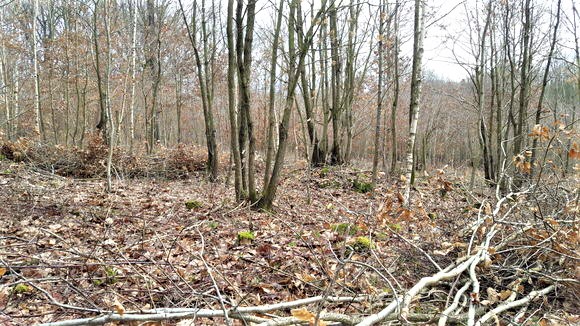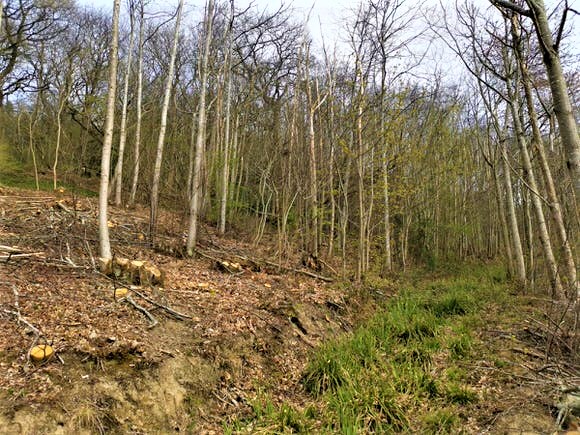Creating a sustainable source of woodland materials and enhancing the biodiversity of the woodland
Coppicing is a traditional method of woodland management. This method of management has been utilised in and around the Wyre Forest for hundreds of years. It ensures the health and survival of local trees, wildlife, and residents.
Coppicing involves cutting the trees close to ground level and new shoots will grow from the old stump or root system. In a coppiced woodland (or copse), young trees are cut down, new shoots grow and then after a few years another crop is harvested, and so the cycle begins again.
A coppiced woodland is usually harvested in sections (or coups) on a rotation. This ensures that a crop is available each year somewhere in the woodland. Coppicing in this way is beneficial to the biodiversity of the woodland by providing a variety of habitats. The length of time between harvesting each coup is dependent upon many factors, such as species or materials needed. Coppicing on a regular basis keeps the trees at a healthy young age. Therefore, the trees can stay young and healthy and without dying of old age.

A range of wildlife can benefit from coppicing, often open woodland species. After a harvest, sunlight on the woodland-floor encourages vegetation. Plants such as bluebells and primroses thrive in the newly open space. Brambles also grow, around the coppiced stools they provide habitat and protection for small mammals. Habitats for beetles and other insects are created by leaving some wood on the ground to decay. The open area also attracts a variety of birds and fritillary butterflies. When the next crop starts growing, these habitats become unsuitable. 12 months later, the next harvest is complete to ensure there is always another home for the wildlife.

Most old coppices in Britain have not been managed this way for many years. They have been left to grow too tall and shaded, which provide less habitat for wildlife and vegetation. As a result, they are much more vulnerable and susceptible to many woodland diseases. Coppices that have been stood for too long unmanaged, provide a less diverse habitat for British wildlife. This means they have lower biodiversity, and are no longer good for coppicing.
Therefore, we at Coppice Creations feel it is important to woodland and wildlife to continue managing woodlands in a responsible and sustainable way.
